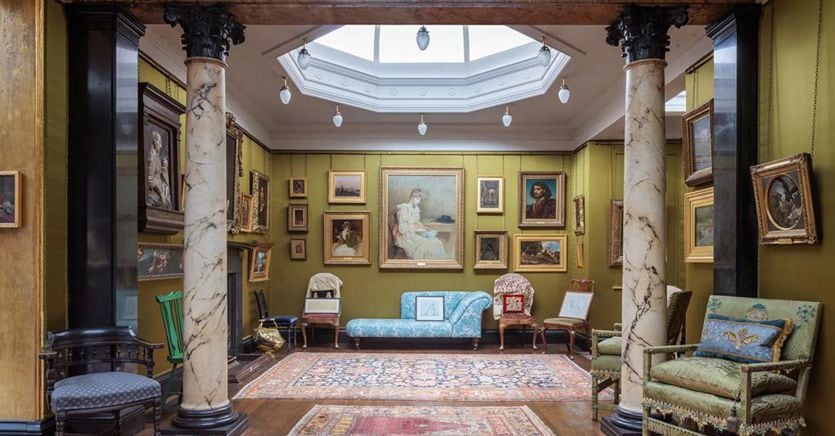Listen to the audio version of the article
A real jewel: the very rare gold drawings by Evelyn de Morgan are on display at Leighton House. It is the ideal casket to display these works created in the second half of the 19th century and completely in keeping with the style of the Victorian artist’s house-museum.
Affiliated with the Pre-Raphaelites and Symbolists, de Morgan has however always followed her own path, establishing herself as an original artist, one of the first women to obtain a scholarship from the prestigious Slade School of Art in London in 1874.
She was a painter, but she conceived and made the gold drawings as works of art in their own right, as opposed to the preparatory sketches for her pictures. Following the principles of Paracelsus, the Renaissance alchemist, de Morgan believed that gold had mystical properties and was the color of spiritual salvation. No one else has made drawings like the ones on display, using chalk on dark gray paper and illuminating the image with gold. The artist created the materials she used by herself, pulverizing gold pigment and then mixing it with water and gum arabic in different densities depending on the desired intensity and brilliance. She also created a golden pastel for an even more luminous and dramatic effect.
Dante
In line with Pre-Raphaelite thinking, the artist turned his gaze to the past, drawing inspiration from the use of gold in sacred paintings. Even the themes chosen by de Morgan are a tribute to the past, from mythology to Christian traditions to Dante, the poet most admired by the Pre-Raphaelites.
Giotto
After visiting Assisi in 1875 and admiring Giotto’s frescoes illustrating the life of St. Francis, de Morgan chose the theme of the “marriage of St. Francis with poverty”, which shows the moment in which the saint devoted himself completely to his wedding ring. A feminist ante litteram, de Morgan has often represented women in her works. Like the goddess Opi, protector of grain, she represents fertility and feminine power. In the “Sentiero thorno” an ethereal figure of a woman seems suspended between an arch and a tangle of thorns, as if uncertain whether to go back or continue along a painful path. The artist was also a militant pacifist, who stood against the Boer Wars. The last drawing in the exhibition is Victoria Dolorosa, from 1900, showing a knight in armor receiving the laurel wreath of victory from an angel, but there is no triumphalism whatsoever in this mournful and melancholic image. The gold designs are very delicate: the exhibition features 11 of a total of 17 that have survived. It is the first time that it is possible to admire them since 1896.
Evelyn de Morgan, The Gold Drawings, Leighton House, fino al 1 ottobre
